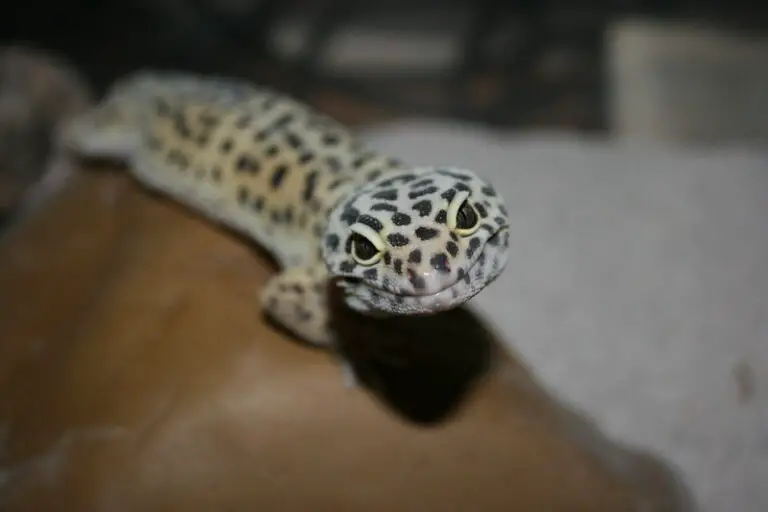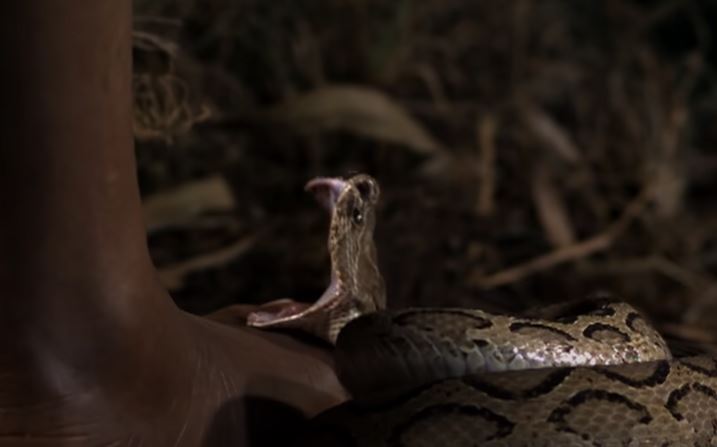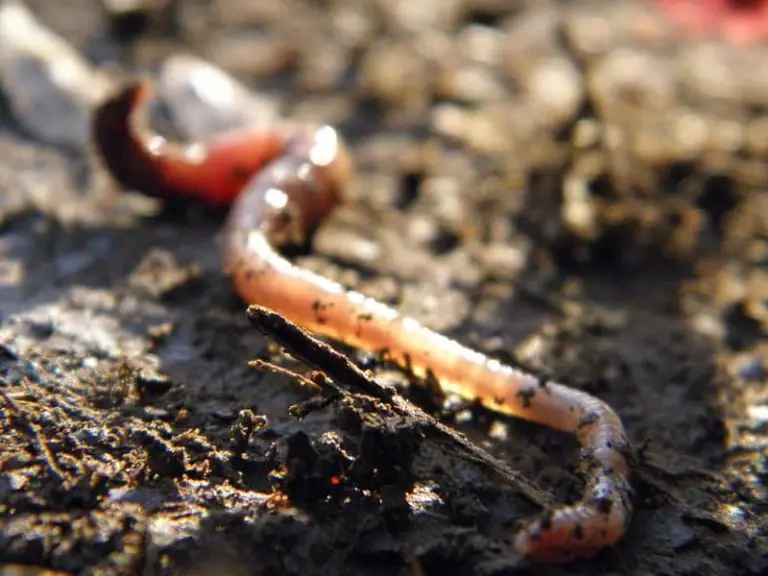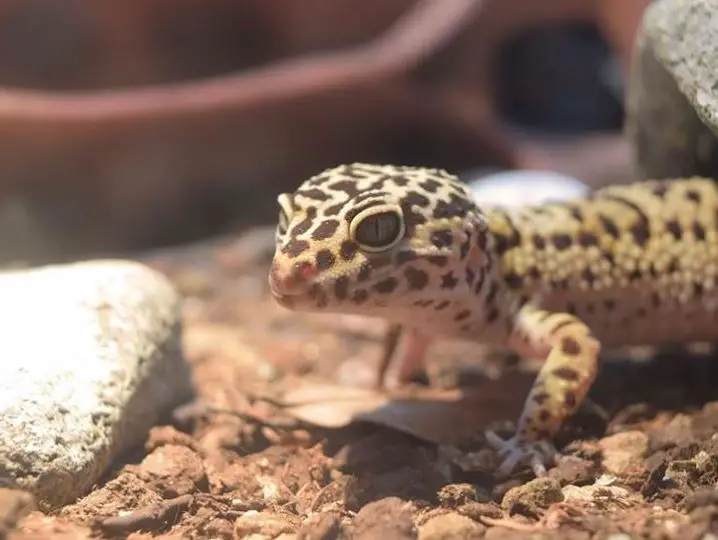Can Snails Feel Pain? (Physical evidence)

Animal species as living beings, however tiny they may be, are sentient beings, even capable of experiencing pain, pleasure, fear or stress.
This feeling capacity means that all animals are worthy of respect, independently of their nature, their size, their physical characteristics or their proximity to human beings.
The snails are usually treated as a pest in the gardens, at different times of the year, so plant lovers are equipped with various devices to kill them, often in a very unpleasant way.
The question is whether animal invertebrates such as insects, spiders, crabs and mollusks such as snails, clams and squid suffer from pain, it is difficult to respond.
They differ not only anatomically from vertebrates, but also their expressive behavior is different. Therefore scientific proof is almost impossible.
In the best of cases. present circumstantial evidence to prove the plausibility of explaining the pain. To what extent, however, based on such evidence, remains a point of disagreement of the experts.
The snails are not a type of plague, neither of invasive species they seem to be easily adapted to what they already have, whether they have water or not, for which they seal the aperture of their shell with mucus, which when drying forms a solid membrane called epiphragm, and thus pass the periods of drought or of lack.
The snails’ composition has been extensively described by science. It is very interesting to remember that they have heart, kidney, lungs, stomach and even cerebral ganglia, which places them in the range of animals that could have sensations.
How could a snail feel pain?
In general, pain in classic injuries is divided into physical and psychological components. The physical aspect is about the fast perception the pain signals.
For example when we burn our hands. The signal is to the spinal cord and the so-called nociception: As a reaction to the Injury, we reflexively take the hand away.
The fact that some invertebrate animals have brains does not mean for sure that they can feel or process pain like human beings, this due to the inexistence of neocortex in their brain.
But it has been confirmed through scientific studies, that although animals lacking neocortex such as fish, have nocioceptors and process painful sensations in a complex way and their behavior is altered by pain, even aquatic invertebrates such as octopus or crab have this capacity of sensation.
In fact, there is absolutely nothing surprising or strange about this, because pain is the basis on which animals develop fear, through which they learn to avoid danger.
The selective pressure to develop organs capable of detecting environmental threats and modifying our behavior according to those stimulations is very intense and we will surely find the ability to perceive in pain in all animals.
It would be another thing if we were able to develop experiments to measure pain in a snail, but its protective responses to adverse conditions and its physiological composition suggest its probable existence, in the absence of conclusive experiments.
Do Snails have a brain?
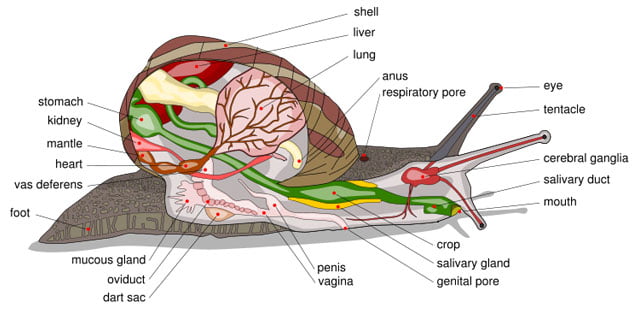
Snails are lung creatures, which means that they have a pulmonary bag or lung that specializes in the use of oxygen obtained by breathing the air of the surrounding atmosphere.
Snails do not have a brain like that of humans or dogs. In their place, the snail’s nerve cells are concentrated in a set of nodes and secrete neuro-secretions that activate vital actions such as the liberation of hormones.
The nerve nodes are connected by bundles of nerve fibers that carry the signals at high speed.
why does salt kill snails?
As we could observe in the previous diagram, snails have a complete anatomical system that includes the mouth, eyes, internal organs and respiratory pores.
If you add salt to the snail somewhere on its skin, this will most likely happen:
The skin of the snail has a soft and thick texture at the same time, also it is much more sensitive than other skins, to the being like that, when throwing some small substance to him as for example the Salt, this will be absorbed and enter the internal places of the body of the snail.
This would affect the nervous system of the animal, so it would begin to damage itself and affect its organs, probably causing pain in the area in the process.
It should also be noted that salt is an element that is very absorbent. The snail and the slug are organisms composed of a great quantity of water and need a great quantity of humidity much more than human beings. When you add salt to a snail, it absorbs water from its body which causes the snail to dehydrate.
How do you get rid of snails humanely?
If you have a garden or orchard and you decide to get rid of snails in a natural way that is not inhumane, there are several methods you could use:
Catching snails and taking them somewhere else: this is the most tedious and complicated method, but it is still a natural and effective way to get rid of the snails that affect your garden.
You can place blankets and traps to catch the snails. For example, you can put tiles or other elements that serve as a cover for them as special baskets to catch them. You can check these “traps” every day and take them out.
When you have gathered all the snails that you have caught in these places, you can take them to another place far from your land where there is a lot of vegetation and some water nearby, like a river.
Use Coffee: One of the most widely used home remedies against snails and slugs is coffee grounds in the garden or orchard.
The remains or dregs of the ground coffee are very effective as a barrier against slugs, snails and worms because it makes their passage difficult in that area and in addition the composition is strong for them, being able to become toxic, and it repels them immediately.
Place a thin layer of ground coffee or its dregs after using it in the area you want to protect. Do not be afraid to pour it very close to the plants, as coffee is very good for the soil and helps to improve its composition by helping it to have more nitrogen.
Use Garlic: Another product to effectively eliminate snails and slugs without killing them is garlic, a plant that we use as food and has thousands of properties, benefits and uses.
It is a powerful repellent due to its strong components and is very easy to use while not damaging plants, crops, or the environment.
You can chop up some garlic cloves and spread the pieces around the area you want to protect or you can make an infusion in large quantities to sprinkle it on the soil and plants when they are not in the sun to prevent them from getting burned by the liquid and the sun’s rays.
Use Grain Salt or Eggshell: Both coarse salt and pieces of eggshells are very effective in keeping slugs and snails away in the garden and orchard. They form a barrier that is very unpleasant for these animals and others, like some worms, because on one hand they prick and on the other hand the salt bothers them and even hurts them.
Therefore, as soon as they begin to notice the barrier of coarse salt or eggshells they decide to leave this place in search of a better one.
Spread a thin layer of these elements around your plants, but do not pour too much salt on the ground because it could spoil it and damage your plants.
How does a snail protect itself from being hurt?
The Snails may not have the fiercest appearance, but neither are they completely defenseless against their attackers. They can make use of strategies such as the following:
They can retract into their shells. You can see that they are not fast; then, when they feel danger nearby they lock themselves in their shell and cover the opening with a layer of mucus called epiphragm.
They secrete more mucus. It is known that when an animal attacks a snail, it releases large amounts of mucus, perhaps to confuse or suffocate the attacker. Until the moment it has not been verified that the secretions of the terrestrial snails contain toxic substances.
They get themselves buried under the ground. It can be effective in removing them from the sight of their predator.
They inhabit areas that offer them shelter such as rocks and plants, which help them hide. Some are placed in hard-to-reach places such as cracks or the roofs of some structures.
Cryptic coloring. The shell of most snails is brown or light brown, which helps them sometimes to go unnoticed on the ground or on rotten tree trunks.
There are snails that use to escape before a direct attack. They are able to move abruptly if another snail is placed on top of them. Some manage to do so without their attacker noticing.


